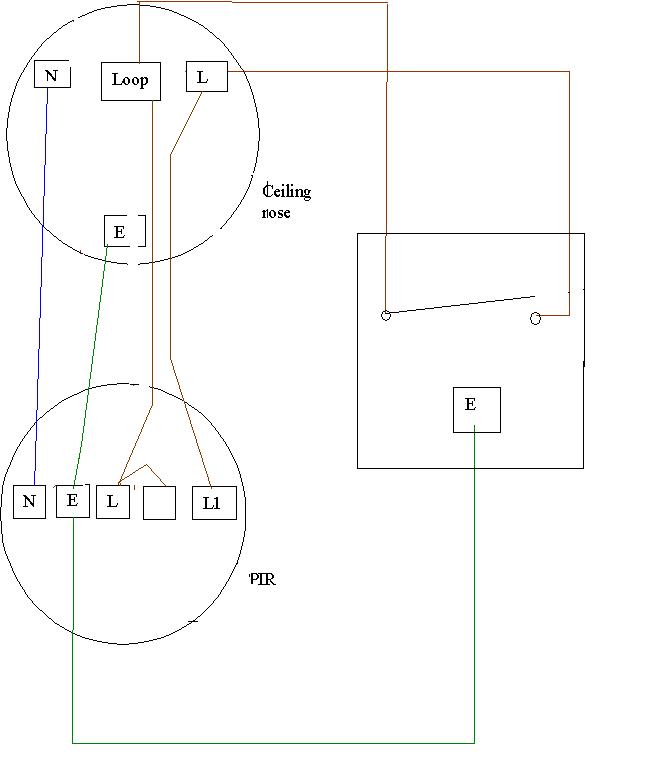Right I am now going to put these in our house as the wife refuses to turn ANYTHING off, never done one!!!!
I have read the instructions but i'm still humming and haring a bit.
Q1. Do I completely disconnect the switch drop and replace with 3core & Earth from the ceiling rose to the PIR
OR
Q2 Can I connect the switch drop at L and L1 and then run through to lamp.
Q3 Will the 2nd method allow me to use the light switch as well as the PIR
or am I being a complete arse!!!!!
Mant thanks, Sunday morning and not had a day off in a week brain cell has gone fuzzy
I have read the instructions but i'm still humming and haring a bit.
Q1. Do I completely disconnect the switch drop and replace with 3core & Earth from the ceiling rose to the PIR
OR
Q2 Can I connect the switch drop at L and L1 and then run through to lamp.
Q3 Will the 2nd method allow me to use the light switch as well as the PIR
or am I being a complete arse!!!!!
Mant thanks, Sunday morning and not had a day off in a week brain cell has gone fuzzy


